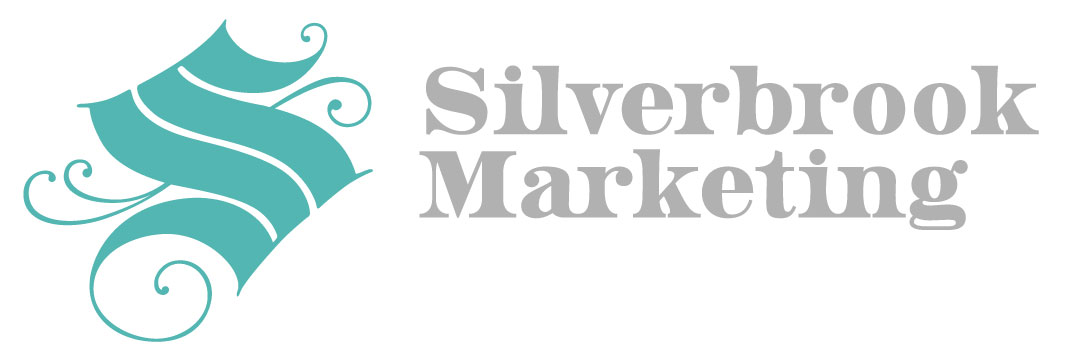
What Are Brand Archetypes and How Can They Guide Your Brand Identity?
If you’ve ever studied human psychology (and possibly even if you haven’t), you’ve heard of Carl Jung. He was a renowned psychologist whose work in the 1940s led to the development of personality archetypes. Jung believed that all humans could be categorized into one of these common “buckets” that are based on the dominant goals of each. As we look at his work, it almost seems like common sense. Of course there are commonalities among people, we encounter them every day. But the brilliance of his work lies in the strength of the archetypes and their ability to predict certain behavior based on the values tied to those dominant goals.
While it’s all very fascinating, modern marketers have applied his theories to common brand values, resulting in 12 brand archetypes. It completely geeks me out to think that someone came up with this brilliant twist on Jung’s work!
The idea behind brand archetypes is identical to Jung’s theories about human personalities. They are relatable at a subconscious level because they so clearly represent people—or in this case, brands—that we have all observed or interacted with. And because they are relatable, people feel like they know what to expect from them. This builds trust, and in turn, loyalty. And in the world of branding, loyalty equals dollar signs.
So how does it all work? Let’s take a look at the brand archetypes and their characteristics, and I’ll share some examples along the way.
Characteristics of the Brand Archetypes
There are 12 brand archetypes, but they can be categorized into four overarching types with similar goals. The Creator, the Ruler, and the Caregiver all aim to provide structure to people’s lives—albeit in different ways. The Innocent, the Sage, and the Explorer all relate to the spiritual side of people. The Outlaw, the Magician, and the Hero speak to people’s desire to leave a legacy. The Lover, the Jester, and the Everyman are all about connecting people to each other.
The descriptions below are amalgamated from many sources; however, you’ll find some of my own thoughts included!

The Creator
Dominant goal: innovation.
Adjectives: inspirational, creative, daring, original, nonconformist, provocative
The Creator has a vision that guides development of their products or services. They’re the early adopters that push the boundaries and think outside the box. They also encourage others to think creatively to solve problems. The most famous example of the Creator brand archetype is Apple. With their tagline of “Think Different,” the brand embodies the goal of innovation and creative expression.
The Ruler
Dominant goal: control
Adjectives: commanding, refined, trustworthy, articulate, confident, and yes—controlling
The Ruler embraces rules, especially the ones they make. They are strong leaders who will defend their position of power. It’s not surprising that Apple’s main competitor, Microsoft, is categorized as a Ruler. They have established themselves as the authority in every aspect of computer technology and have a reputation of being extremely trustworthy.
The Caregiver
Dominant goal: service
Adjectives: warm, compassionate, nurturing, secure, reassuring, protective
The Caregiver has a desire to help others. They have sparkling reputations as champions of those less fortunate or those who cannot care for themselves, like babies. As such, Pampers is a Caregiver brand. They are all about nurturing our most defenseless people and making their lives better.
The Innocent
Dominant goal: happiness
Adjectives: optimistic, joyful, honest, good, inclusive, humble
The Innocent desires to do the right thing and bring goodwill to others. Their positive outlook and focus on spreading joy make them easy to embrace. My favorite brand, Coca-Cola, is an Innocent brand. Their branding is all about bringing people together and enjoying life. (Remember this great ad?)
The Sage
Dominant goal: knowledge
Adjectives: guiding, assured, wise, truthful, understanding, expert, intelligent
The Sage believes that the truth will set you free. They don’t necessarily want to change the world themselves, but they’re happy to empower others to do so. They are acknowledged thought leaders who share information freely. TED (you know, like TED Talks) is a great example of the Sage archetype. They empower people to share their knowledge and make a difference in each others’ lives.
The Explorer
Dominant goal: freedom
Adjectives: independent, nonconformist, adventurous, pioneering, exciting, fearless, daring
The Explorer wants to set off into uncharted territory and make great discoveries. They’re brave to leave the norm behind and are constantly chasing excitement. I want to be high class and say that National Geographic is a great example of the Explorer, but I really think of Jeep first. Their brand is all about getting outside the routine and having adventures.
The Outlaw
Dominant goal: liberation
Adjectives: disruptive, confrontational, rebellious, combative, free-thinking, challenging
While liberation and freedom are similar concepts, the Outlaw differs from the Explorer in that they actively seek to break the rules. The Outlaw can be off-putting to the masses, but they create a cult-like following with extremely loyal customers. Harley-Davidson is the most often cited example of the Outlaw.
The Magician
Dominant goal: powerful experience
Adjectives: visionary, dazzling, informed, charismatic, transformational, imaginative, idealistic
The Magician wants to turn everyone’s dreams into reality. They live by their vision and often keep their knowledge to themselves to make it happen. Disney is the classic example of the Magician brand archetype. They focus on creating magical moments for their customers and transforming seemingly routine activities (going to the movies, taking a family vacation) into powerful experiences.
The Hero
Dominant goal: mastery
Adjectives: honesty, bravery, empowering, hardworking, motivating, encouraging, competent
The Hero wants to make a difference and solve problems. They tend to see things in black and white, right and wrong, and they rise to meet challenges through hard work and determination. Nike embodies all these characteristics perfectly! Their emphasis on the hard work behind being a successful athlete—no matter your level—sets them apart from their competitors.
The Lover
Dominant goal: connection
Adjectives: intimate, empathetic, soothing, loving, passionate, committed, indulgent, affectionate
The Lover wants to be desirable and appeals to their audience through emotional and physical means. They represent an intimate connection, not necessarily sexual but definitely romantic. Some Lover brands are obvious, like Victoria’s Secret, but others are more subtle, like Chanel. Both brands emphasize a romantic view of life and suggest that their products will bring desire into your world.
The Jester
Dominant goal: entertainment
Adjectives: playful, fun-loving, pleasurable, humorous, positive, inclusive, optimistic
We all know a Jester type—the class clown who loves being the center of attention and making people laugh. Similarly, Jester brands want to maintain playfulness and bring people together through fun. Strangely enough, Old Spice now embodies this brand archetype. (8-year-old me would never have thought my dad’s deodorant was fun…)
The Everyman
Dominant goal: belonging
Adjectives: relatable, approachable, unpretentious, friendly, humble, authentic, inclusive
The Everyman is just one of the guys. They aren’t extreme in any way, but they strive to belong and be liked by everyone. It’s a tough archetype to be in because if there’s nothing special about you, people might forget you’re there. Ford is the embodiment of the Everyman, with their good ol’ boy marketing and their strong association with the lifestyle of the average American.
Determining Your Brand Archetype
You’ve probably already found that you relate to some of the archetypes above. Just be sure that your archetype aligns with your values and vision. Embracing these foundational aspects of your brand not only helps you differentiate from your competitors but also strengthens your relationship with your audience.
When your archetype is aligned with your target audience and their pain points, desires, and needs, you’re literally speaking their language. The archetypes allow us to move beyond a logical choice and impact our audience’s emotions. Once you dive deep into the feelings you want to induce, you’ll be able to find the archetype that fits.
But what if you relate to more than one archetype? That’s totally ok! But it is wise to choose one main archetype to relate your brand to, while using the secondary archetype to help build out your brand identity.
Building Your Brand Identity
Now that you’ve identified your brand archetype, you can get even more specific and create your brand identity. While most brands fit into one of the archetypes, your brand’s unique “personality” is what guides your interactions.
Although it might feel weird, giving your brand human characteristics is necessary for dialing in its identity. Think about a movie character based on your brand. What do they look like? How do they speak? What do they like or dislike? Each brand archetype has some typical adjectives associated with it, but dig even deeper. Don’t settle for surface-level descriptors.
If you can build out a full description of your brand’s human characteristics, you can build a profile that others can use. For example, if you’re hiring a copywriter to create content for your blog, you’ll be able to give them the inspiration for your brand identity so that they fully understand the brand’s voice. The same idea applies to social media managers, graphic designers… anyone who will be speaking on behalf of your brand.
I feel like I could go on analyzing brands and their archetypes forever, but I do have to sleep sometime! Give me a shout if you want to discuss your brand (or just wax on about the brands of the world).
Want even more marketing thoughts in your inbox every week? Sign up for the Silverbrook U newsletter!





